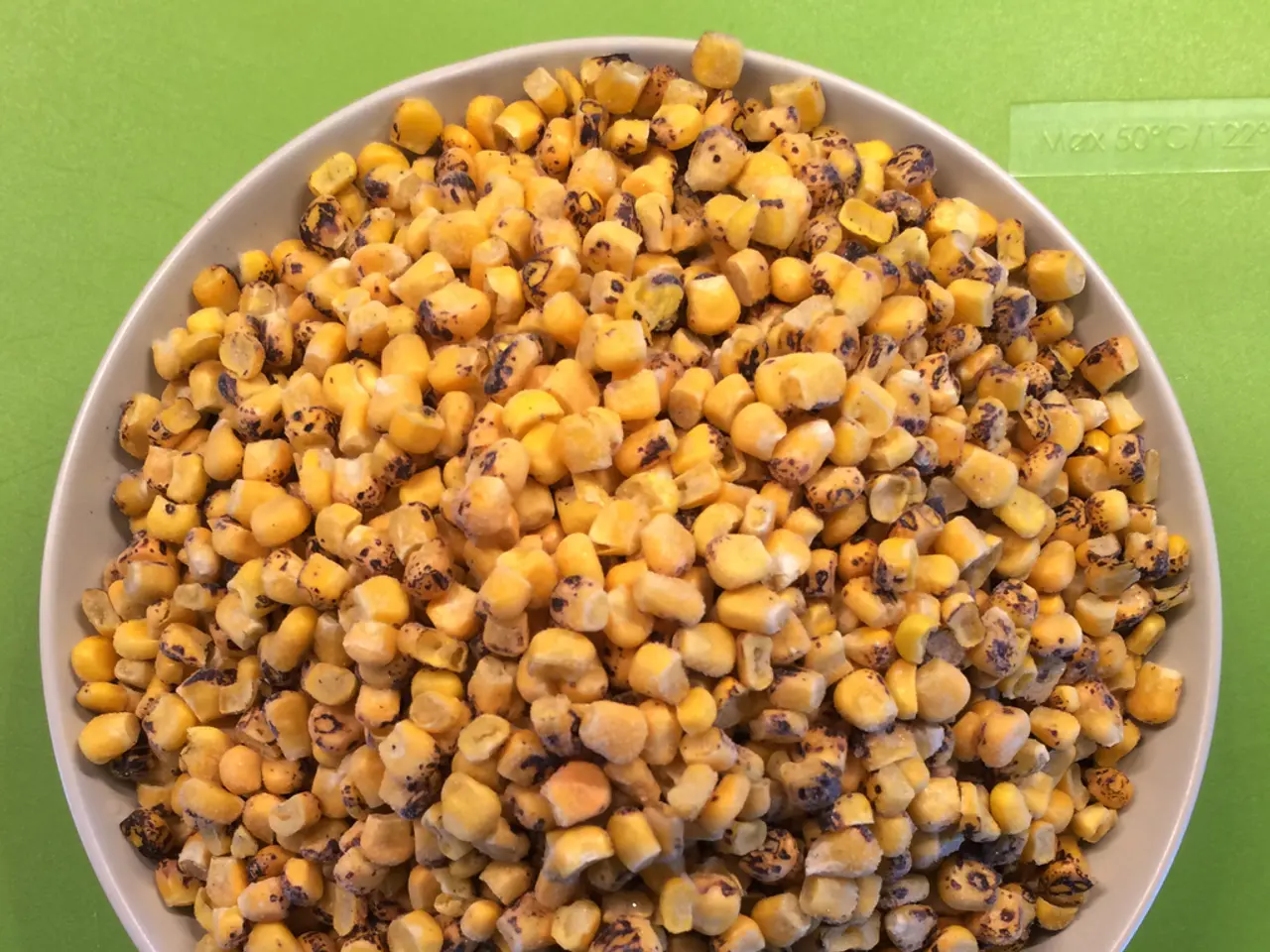Grains Market Performance in Q2 and Forecast for Q3
In the first half of 2025, the commodities market saw a mixed performance for grain and oilseed futures. While CBOT corn futures declined by 8.04% in Q2 and were 8.29% lower over the six-month period, soybean meal futures posted a 7.31% decline in Q2 and were 11.84% lower than the 2024 closing level on June 30. However, nearby CBOT oat futures posted an 11.70% Q2 gain and were 17.02% higher over the first half of the year.
The grain and oilseed sector experienced a marginal decline of 0.30% in Q2 and was only 0.08% lower during the first six months of 2025. Despite the low prices, the sector has yet to see a significant recovery, with another year of bumper crops potentially sending prices lower.
The price action of grain and oilseed futures in Q3 2025 and beyond is influenced by several key factors, including supply, demand, logistical, geopolitical, and technical dynamics.
**Supply Factors:**
Ample stocks in the U.S. and globally are exerting downward pressure on soybean prices, as higher ending stocks signal abundant supply. USDA data show soybean planted area for 2025 is estimated at 83.4 million acres, about 4% lower than last year, affecting future crop expectations. Favorable weather conditions in major producing regions like the U.S. contribute to a positive harvest outlook that adds bearish pressure on prices. Brazil's record 2024/25 soybean crop faces logistical bottlenecks, including port congestion causing export delays of 14–21 days, which indirectly supports U.S. prices by tightening immediate global supply.
**Demand Factors:**
China's strategic purchasing, driven by state-owned entities like Sinograin, has increased U.S. soybean imports by about 20% since Q1 2025 as China rebuilds reserves ahead of the U.S. harvest. However, demand in China remains somewhat tepid overall, especially for soybean meal, as high inventories dampen near-term feed demand. Rising biofuel mandates and renewable diesel production have boosted soybean oil prices, encouraging crushing demand which influences meal supply and prices. Temporary demand surges linked to geopolitical tensions have affected soybean meal prices but proved short-lived.
**Market Sentiment and Technical Factors:**
Recent price action shows bearish dominance with prices near multi-year lows, though technical rebounds occur around key resistance and support zones. Bearish momentum is supported by technical signals such as moving average crosses and weakening momentum indicators, suggesting continued downward pressure on soybean meal prices in the near term. Managed money has reduced net long positions in soybean meal futures, reflecting cautious or bearish sentiment among speculative traders.
**Currency and Competitive Factors:**
Currency movements affect European markets' competitiveness, influencing price dynamics for crops like rapeseed.
**Seasonal and Export Dynamics:**
Seasonal factors and export momentum, including slowdowns or accelerations in shipments, will continue impacting price fluctuations during Q3 and beyond.
In summary, grain and oilseed futures prices in Q3 2025 and thereafter are influenced by a complex interplay of ample global stocks, favorable weather, logistical constraints in South America, variable Chinese demand including strategic reserve rebuilding, rising biofuel-driven crushing demand, technical market dynamics, and currency effects. Current conditions suggest a leaning toward bearish or sideways price trends with intermittent rebounds depending on export pace and geopolitical developments.
The USDA increased its global beginning and ending 2025/2026 soybean stock forecast in the June WASDE report. Population growth and increasing demand for biofuel put additional upward pressure on the agricultural products, suggesting limited downside and potential for explosive upside price action for grain and oilseed futures. The nearby rough rice futures moved lower, falling 4.53% in Q2 and posting a 7.63% decline over the first six months of 2025. The June WASDE report did not provide specific information about the oats or rice markets. CBOT soft red winter wheat futures fell 1.54% in Q2 and were down 4.13% over the first half of 2025. The prospects for Q3 and beyond suggest that the weather across the fertile plains in the Northern Hemisphere will determine the path of least resistance of prices for the leading grains and oilseeds- corn, wheat, and soybean futures.
In Q3 2025 and beyond, the sports world might experience a surge in youth participation due to the decreasing prices of sports equipment, as the commodity market's decline in grain and oilseed prices may lead to a decrease in production costs for companies that manufacture sports goods. The ongoing bearish sentiment in the soybean meal market, driven by factors such as ample global stocks and reduced net long positions among speculative traders, could have unforeseen consequences on the production of animal feed, potentially affecting local sports teams' performance and budgets.








